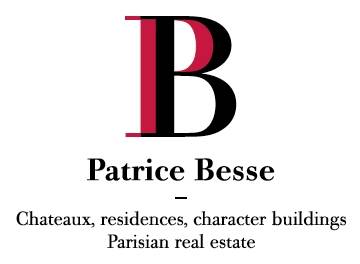Two 18th-century houses joined together to form a single property with a tree-dotted garden, nestled in the historical town of Falaise in Normandy - r
Two 18th-century houses joined together to form a single property with a tree-dotted garden, nestled in the historical town of Falaise in Normandy.
The property is tucked away in the heart of Falaise, a town in the south of Normandy's Calvados department. Falaise was once the capital of the Duchy of Normandy. William the Conqueror was born in this town. Falaise lies upon a hill and stretches along the River Ante, a tributary of the River Dives. The charming town has managed to shrug off the scars of the Allied bombings it underwent in the Second World War. Falaise is known for its imposing medieval castle, which stands proudly upon a rocky outcrop. The town also has a rich ecclesiastical heritage: Cistercian monks were in the local region from the 11th century. Today, shops make Falaise vibrant. And there are many associations and facilities in sports and culture here too. The city of Caen and its port are only around 35 kilometres north of Falaise. You can reach Paris by rail or road in just over three hours.
The road on which the property lies is currently being revived. It used to be set back from Falaise's commercial vibrancy, even though it is near the town centre. Today it has more life in it. Not far away, there is Saint-Gervais-Saint-Protais Church, an 11th-century edifice listed as a historical monument. The home dates back to the 18th century. It is the result of two buildings being joined together. Plots like the ones on which these buildings were made often belonged to religious communities. At the end of France's Ancien Régime, many of these plots were divided up, sold and turned into homes. For owners, they represented investments as they brought in rent paid by the families living in them. The upper-middle classes of Falaise settled on this street. You can see this in the elegant appearance of the edifices that stand along it. Indeed, on this road, there are still sumptuous townhouses with gardens and courts. The property's street-side facade faces north-west. One of the buildings of this unified property has a second floor and the other one has a third floor. The plain facades, main of Caen stone, are rendered. The home's gabled slate roofs each have a chimney stack. They are dotted with roof windows too. On the ground floor, the left-hand building has a glazed double door and a garage door and the right-hand building has a front door and a window fitted with metal shutters. These openings fill the interior with natural light. On the upper floors, there are four windows in the left-hand building and six in the other. These windows were recently replaced. You can see their original surrounds of exposed stone. Further to the right, there is a covered carriage entrance where there is a secondary exit door. And at the back of the property, the ground floor has a half-open gallery with a terrace and an arbour. It looks out at a south-east-facing court with vegetation and a pond. Exposed Caen stone has been preserved on this side. From the secret tree-dotted garden, you can admire a view of a 19th-century building.
The houseThe two buildings were originally separate units, but they were joined together at the two levels they share. So you can move around inside the home smoothly and you can imagine possibilities for development in it too.
The ground floor
From the street, two entrance doors lead into the first three rooms of the right-hand building. The first room has an 18th-century stone fireplace. The two other rooms lie beyond it. All three rooms were probably once a shop or a caretaker's lodge. Some of the walls have kept their exposed stonework. The concrete floors are ready to be tiled. Different partition walls have been opened up for a better layout. A stone spiral staircase, perhaps from before the 18th century, has a counterpart in the second building. More recent ...


